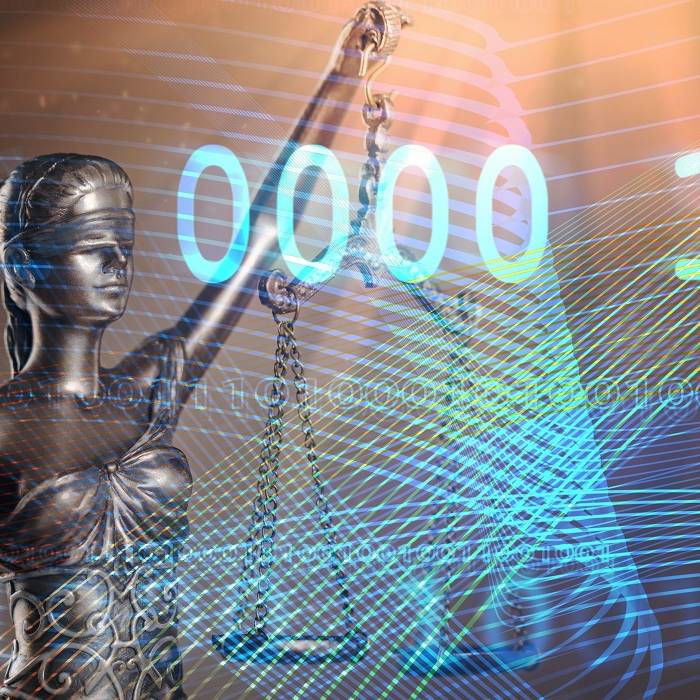From the Equifax data breach that exposed 150 million customers’ sensitive personal information to the catastrophic Colonial Pipeline attack that caused temporary fuel shortages throughout the eastern United States, cyberattacks are becoming more dangerous and higher stakes.
As opportunistic hackers become emboldened, institutions are being forced to adopt new and innovative security measures to protect themselves from a litany of growing threats.
But new technologies can change how governments and businesses protect their sensitive data and vulnerable systems from devastating and disruptive attacks. Artificial intelligence (AI) and machine learning (ML) are rapidly emerging as two of the most powerful tools in the world of cybersecurity.
With the help of cloud computing resources, organizations can use these technologies to automate tasks, identify threats and respond to incidents in record-breaking time.
The Rise of Cyber-Sentinels
“Artificial intelligence brings two main things to cybersecurity: speed and scale,” said Dr. Giovanni Vigna, director of the Center for Cybersecurity at the University of California Santa Barbara.
Artificial intelligence and machine learning function by analyzing unimaginable amounts of data to find patterns and identify anomalies. By isolating incidents that could indicate malicious activity, AI and ML can help uncover threats that would be slower and harder to spot using more traditional methods. Time is of the essence when malware and ransomware are lurking, and AI cybersecurity can curb dangerous threats before serious damage is done.
“AI in cybersecurity can help in many different ways,” said Vigna, who’s leading a consortium of researchers on the topic as part of a National Science Foundation-funded institute.
“It can help in understanding the security posture of a network, so an administrator can fix problems before they are exploited. Of course, it can come into play in the detection process. Another important aspect is attribution — understanding not only that you’ve been attacked, but who’s attacking you and what they’re trying to achieve. Finally, it can help in the remediation process. When you have been attacked, you want to understand as fast as possible what is the best course of action to counteract it and bring the infrastructure back to a normal state.”
Microsoft’s Security Copilot is the latest product utilizing the power of AI to uncover, track and investigate computer network intrusions. Its turnkey software helps entities more easily deploy AI and ML for cybersecurity. And it’s powered in part by ChatGPT, reported WIRED.
As cybersecurity threats continue to escalate, businesses need to adopt AI and ML solutions to stay ahead of destructive hackers. As a result, 76% of enterprises have prioritized AI and ML in their IT budgets, according to Forbes.
“We are constantly under attack,” Vigna said. “The main problem is that we don’t have enough human experts because they’re difficult to come by and those experts have human time reactions. What artificial intelligence really brings to the table is the ability to scale up efforts and also react with a timeline that prevents an attack from becoming a disaster.”
The Newest Arms Race
Add quantum computing into the mix and these risks become even more alarming.
Quantum computing involves exponentially more powerful computers that use quantum mechanics to solve problems that orthodox computers simply can’t handle. This enormous leap in computing power poses a serious threat on one side of the coin and a serious opportunity on the other.
In the near future, cybercriminals could use quantum computing to break many of the encryption algorithms that are currently being used to protect the cybersphere. That means companies will also have to use AI and ML to develop quantum-safe encryption methods that will protect systems and data for the foreseeable future.
Cloud on the Frontline
Cloud computing underpins all of these technologies — from artificial intelligence and cybersecurity to machine learning and, eventually, quantum computing.
“Everything these days runs in the cloud,” Vigna said. “The cloud is an enabling technology. It can enable protein synthesis and intelligent agents. It’s raw computing power. When you have very complex algorithms that require scale, the cloud comes in very handy. Since most systems that you want to protect are on the cloud, at the same time that it’s the source of information and the generator of autonomous reasoning, it’s also the field in which the protection action takes place.”
Hybrid multicloud IT systems that storing information across many different environments, including both public and private clouds, is becoming a common strategy for organizations eager to modernize their cybersecurity.
“There will always be a mix of on-premise and public cloud that addresses the needs of an enterprise,” Vigna said. “There are certain operations that you want to run in a controlled environment where you don’t disclose secrets or sensitive information about your network and you want to have maybe a portion of the computation happening in-house, at your own data center, and other things happening at scale in the public cloud.”
Cybersecurity continues to be increasingly critical for individuals, businesses and governments, and AI and ML are poised to help in a big way.
Vigna said the new frontier of AI is autonomous reasoning.
“Programs that are able to receive inputs from the environment, reason about the information they gather and then perform action,” she said.
“You can look at artificial intelligence as the mechanism, but what you really want is automation. To me, the real innovation in cybersecurity is going to be automating more and more tasks. In the very end, you want technology that saves you money or time, and that’s the promise of AI.”





